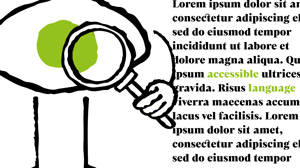25 Feb, 05:00 pm, UTC
Accessible language in the age of division


Join us for our latest webinar
In 60 minutes, we’ll look at:
- how accessible language benefits everyone
- the challenges companies in the EU and US face
- which writing techniques will help you cut through complexity with ease
- and the steps you can take to improve how your organisation communicates.
Why now?
In June the European Accessibility Act (EAA) comes into force. That means businesses need to comply with accessibility regulations, including how accessible language is.
In the US, The White House has issued an executive order on diversity, equity, inclusion and accessibility (DEIA) activities. And the response from some businesses has been swift, but wildly different.
There’s a need for speed in Europe, for businesses to comply with the EAA. While in the US, the situation will present new challenges to navigate.
But if we bring it back to language – accessible language – things are a little simpler.
Accessible language benefits the many and the few
It benefits:
- people with learning difficulties
- people reading in a second language
- the average person in the US and Europe (where the average adult reading age is 9-14 years old)
- everyone.
There’s no group of people who are worse off when language is easy to understand. Accessible language doesn’t discriminate.
Beyond being good for people: employees, clients, customers and stakeholders. It’s good for business: the bottom line, your brand and its reputation.
In our webinar, we’ll show you how.